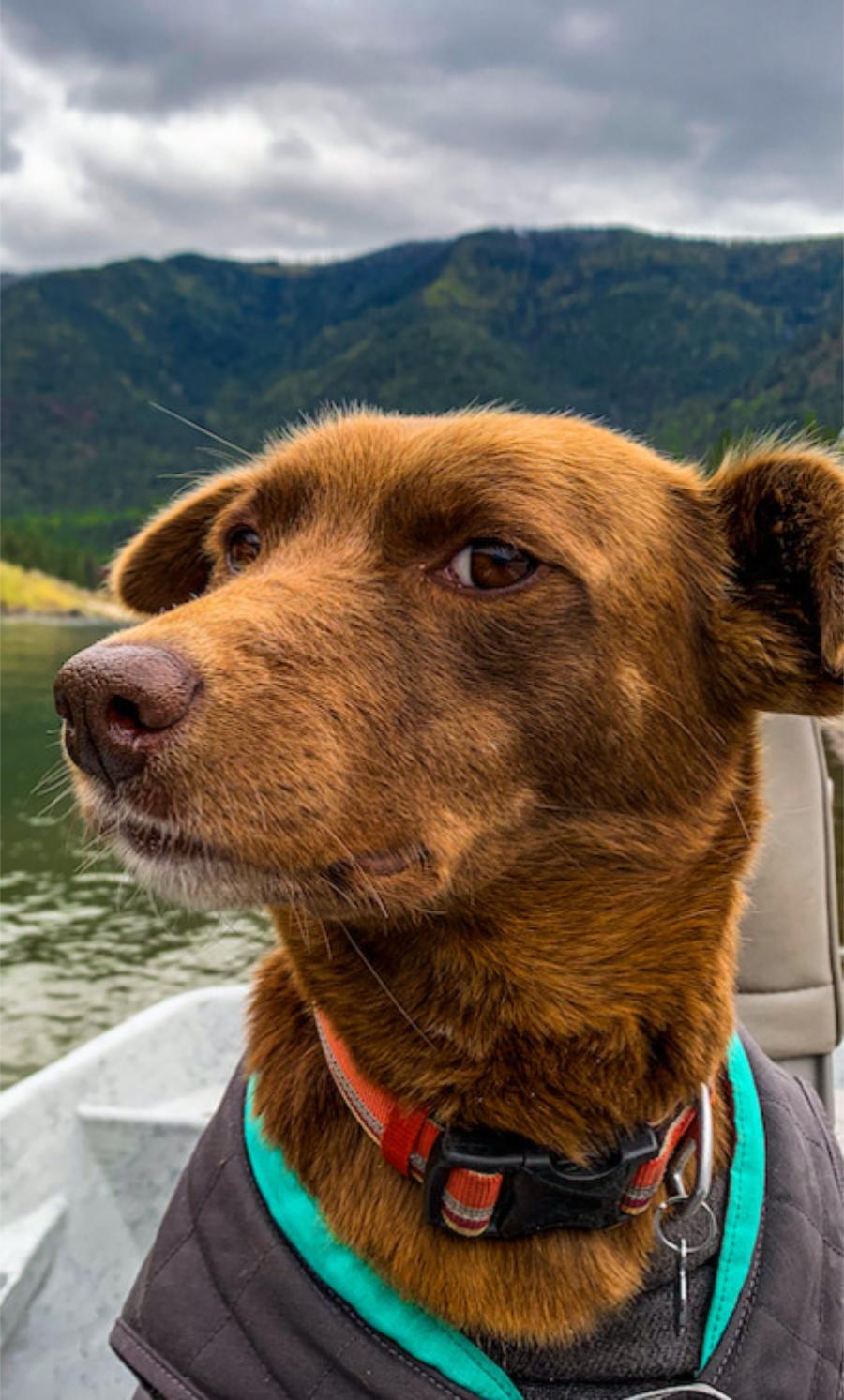St. Regis Fly Fishing
St. Regis is a hidden gem that’s quickly becoming a sought-after destination for fly fishing enthusiasts. What makes it so special? It’s the combination of pristine conditions, diverse habitats, and a deep commitment to conservation that sets St. Regis apart. Let’s dive in and explore what makes this place truly extraordinary.
Pristine Conditions and Diverse Habitats
The St. Regis River and the Clark Fork River are known for their crystal-clear waters and unspoiled beauty. These pristine conditions are a testament to the area’s dedication to preserving its natural resources.
But it’s not just about the water clarity. The diverse aquatic habitats found in St. Regis is equally impressive. From slow-moving pools to fast-flowing riffles, beautiful canyon stretches and pocket water there’s a variety of environments that support a thriving ecosystem and provide ample opportunities for anglers to test their skills.
Whether you’re casting a line in the main stem of the Clark Fork River or exploring one of its most prominent tributaries, St. Regis River. You’ll be amazed by the sheer diversity these two rivers provide you.

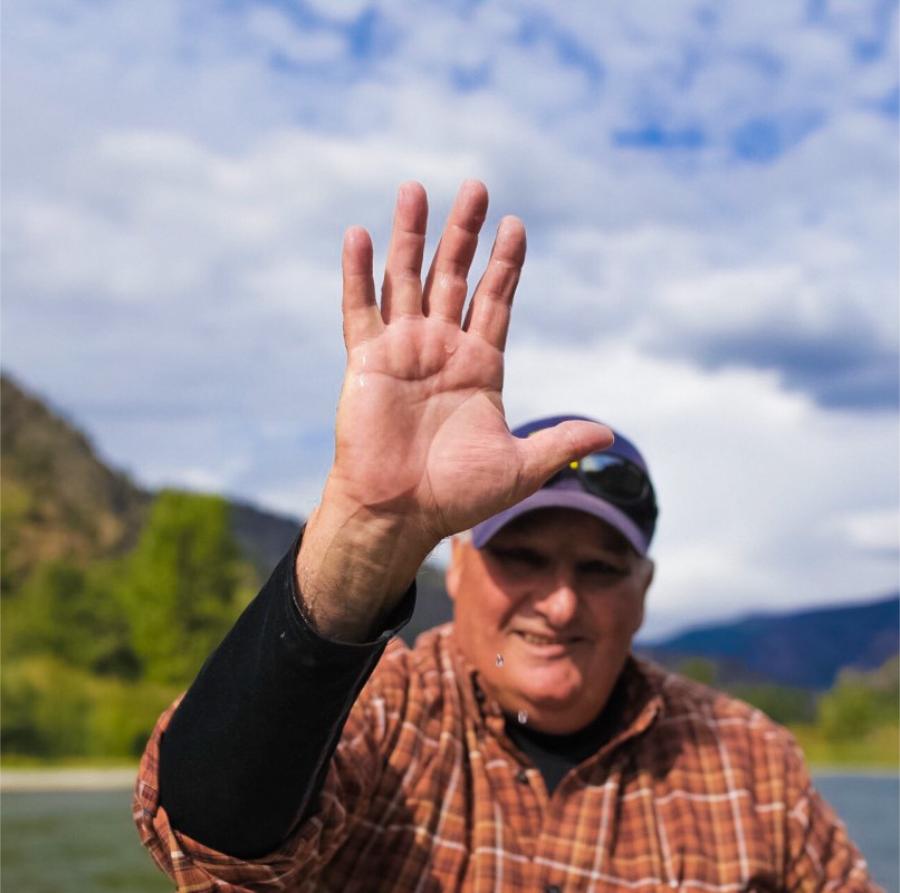
Conservation and Sustainable Practices
St. Regis is more than just a pretty face. The guide community is deeply committed to conservation and sustainable fishing practices.
Our guides work tirelessly to educate our anglers about responsible fishing techniques, such as catch and release, to ensure the long-term health of the fishery. They team up with government agencies too, keeping an eye on water quality, fixing up natural homes for wildlife, and standing guard over species that need a little extra help.
By choosing to fish in St. Regis, you’re not only enjoying world-class angling, but you’re also supporting a community that values the preservation of its natural resources for generations to come.
Preparing for Your St. Regis Adventure
Now that you’re hooked on the idea of fly fishing in St. Regis, the clock’s ticking and it’s high time we kicked off planning your epic journey. Here are some essential tips to ensure you have a memorable and successful trip.
Having the right gear can make all the difference in your fly fishing experience. When packing for St. Regis, make sure to include:
- A versatile rod and reel setup (a 9-foot, 5-weight rod is a great all-around choice)
- A variety of line types, including floating and sink-tip fly lines
- Waders and wading boots for accessing deeper water
- A selection of flies that imitate local mayflies, stoneflies, caddis, and baitfish
- Hat and polarized sunglasses to reduce glare and spot fish in the water
Don’t forget to pack layers of clothing to accommodate for changes in weather throughout the day. A waterproof jacket, quick-drying pants, and moisture-wicking base layers are essential.
Before you head out on the water, make sure you have all the necessary licenses and permits. In Montana, all anglers 12 years and older must have a valid fishing license. You can purchase one online or at local fly shops and sporting goods stores.
It’s also important to be aware of any seasonal restrictions or regulations that may be in place to protect spawning fish or sensitive habitats. Check with the Montana Fish, Wildlife & Parks website for the most up-to-date information.
When packing for your trip, consider the time of year and the typical weather conditions in St. Regis. In the summer months, be prepared for warm days and cool evenings. In the fall, pack extra layers as temperatures can drop quickly.
The Fish of St. Regis
In St. Regis, you’ll find many different fish darting around, but let’s be honest – it’s the trout that really know how to put on a show. Our native fish the cutthroat trout is the most prominent catch in these waters. The average Cutthroat trout is 12-17”. There are also rainbow trout, cuttbows, brown trout, and the world famous rocky mountain whitefish.
These wily fish are known for their fighting spirit and beautiful coloration. Imagine hooking into a feisty rainbow trout, its iridescent scales flashing in the sunlight as it leaps from the water. Or picture yourself cradling a stunning cutthroat trout, admiring its signature red slash beneath the jaw before gently releasing it back into the river.
But it’s not just about the thrill of the catch. Fly fishing in St. Regis is an immersive experience that allows you to connect with the natural world in a profound way. As you stand in the river, surrounded by towering pines and rugged mountains, you’ll feel a sense of peace and belonging that’s hard to find anywhere else.
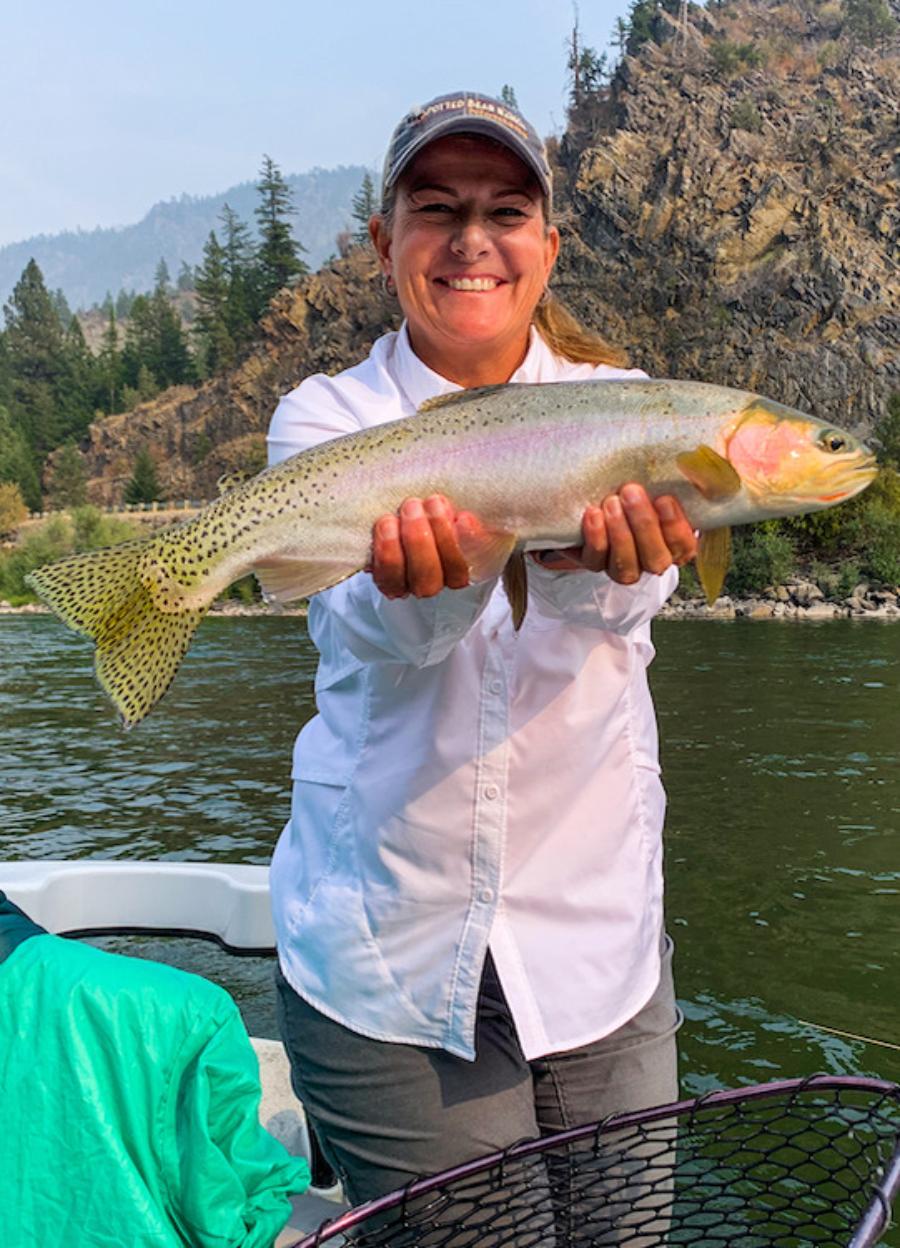
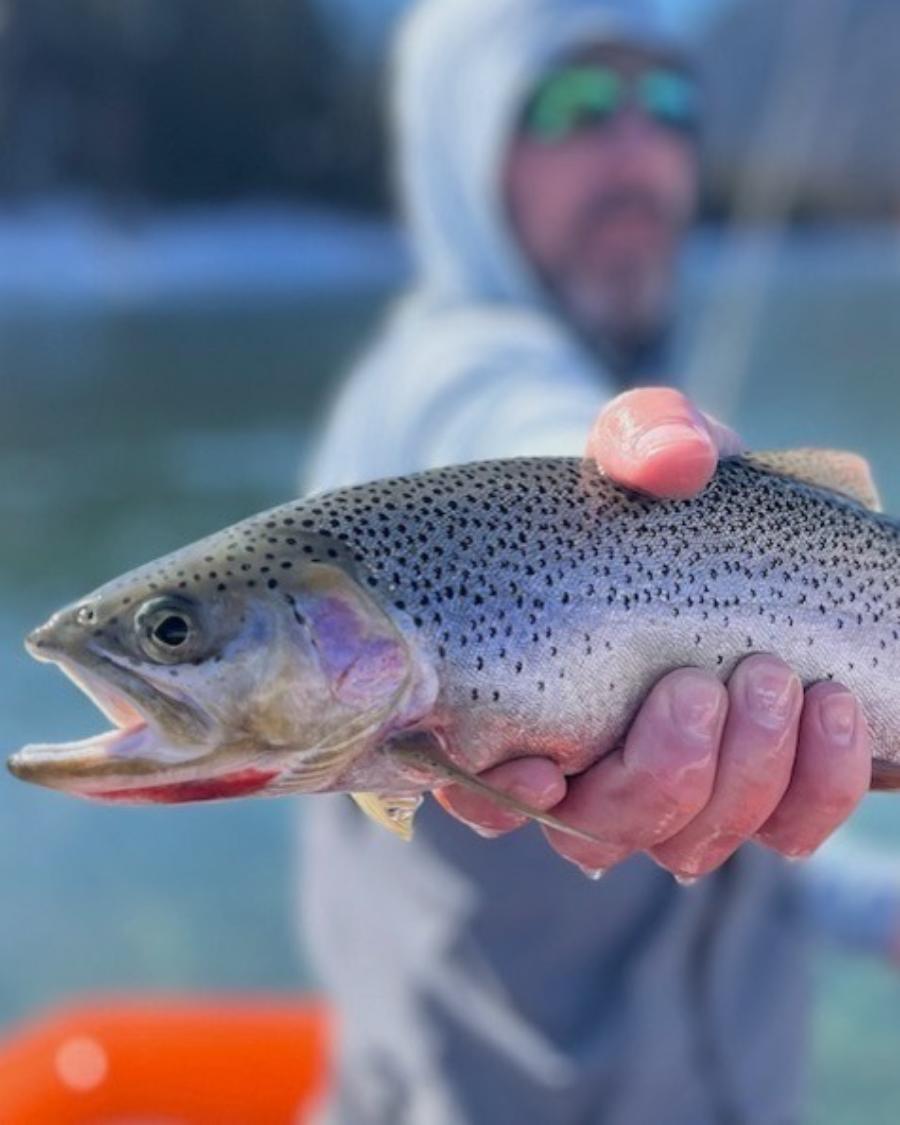
Hidden Gems and Local Insights
When it comes to finding those secret honey holes, the ones that only the locals seem to know about, there’s no substitute for tapping into that insider knowledge. So, what we’re really talking about here is making friends with the folks who’ve dedicated their lives to knowing every secret spot and hidden gem along these rivers.
These seasoned pros have a sixth sense for where the fish are biting. They can lead you to the less crowded sections of river that are off the beaten path, away from the crowds and the pressure. Places where you can cast a line in solitude and really soak in the serenity of the surroundings.
One such hidden gem is the lower reaches of the Clark Fork River, where we have secure private river access to launch our boats. This stretch of water is usually void of any other anglers or boats. It’s a great stretch to hopefully enjoy not seeing another boat on the float.
Another local favorite is a small tributary of the Clark Fork that shall remain nameless (we’ve been sworn to secrecy). Let’s just say it’s a place where the cutthroat grow fat and sassy, and you’re more likely to see deer or maybe a moose than another angler.
Best Times and Places for Fly Fishing in St. Regis
So when’s the best time to wet a line in St. Regis? Well, that depends on what you’re after. For dry fly purists, late June through September is usually when the big hatches pop off. We’re talking clouds of caddis, PMDs, and stoneflies that bring the fish to the surface with reckless abandon. The Sloway access on the Clark Fork is a great spot to target rising fish during this time.
But honestly, you can’t really go wrong any time from March-April and late June through October. The key is to pay attention to the water levels and the weather. If the rivers are blown out from runoff or a big storm, it might be better to wait a few days for things to settle down. As for the hotspots, the Clark Fork around St. Regis is loaded with great water. Any of the stretches from Forest Grove, past St. Regis proper is a float fishing paradise, with long riffles and deep pools that hold some serious lunkers. Just be sure to respect private property and stick to the designated access points.
Techniques and Fly Patterns for Success
Now, let’s talk tactics. When it comes to fooling these wily trout, having the right fly is half the battle. The other half is presenting it just right. In the early season, when the water is high and cold, nymphing is often the name of the game. A tandem rig with a heavy stonefly pattern like a Kaufmann’s Stone or a Pat’s Rubber Legs on the bottom and a smaller mayfly nymph like a Pheasant Tail or Hare’s Ear even a glo bug or a worm below it can be deadly.
As the water warms up and the hatches start popping, it’s time to break out the dry flies. A well-presented Elk Hair Caddis or PMD can bring even the wariest trout to the surface. If they’re being picky, try downsizing your tippet and going with a more subtle pattern like a Parachute Adams or a CDC Biot Comparadun.
And don’t forget the streamers. These big, meaty flies imitate baitfish and can trigger the aggressive predatory instincts in the biggest cutthroats and rainbows. A Woolly Bugger, Sparkle Minnow, or Sculpzilla stripped through the deep pools and undercut banks can produce some heart-stopping eats.
Honestly, the true key to knocking it out of the park is being able to roll with the punches and switch things up depending on what’s thrown your way. Listen to what the fish are whispering and don’t shy away from mixing things up until you’ve unlocked their secrets. That’s the beauty of fly fishing – there’s always something new to learn and discover.
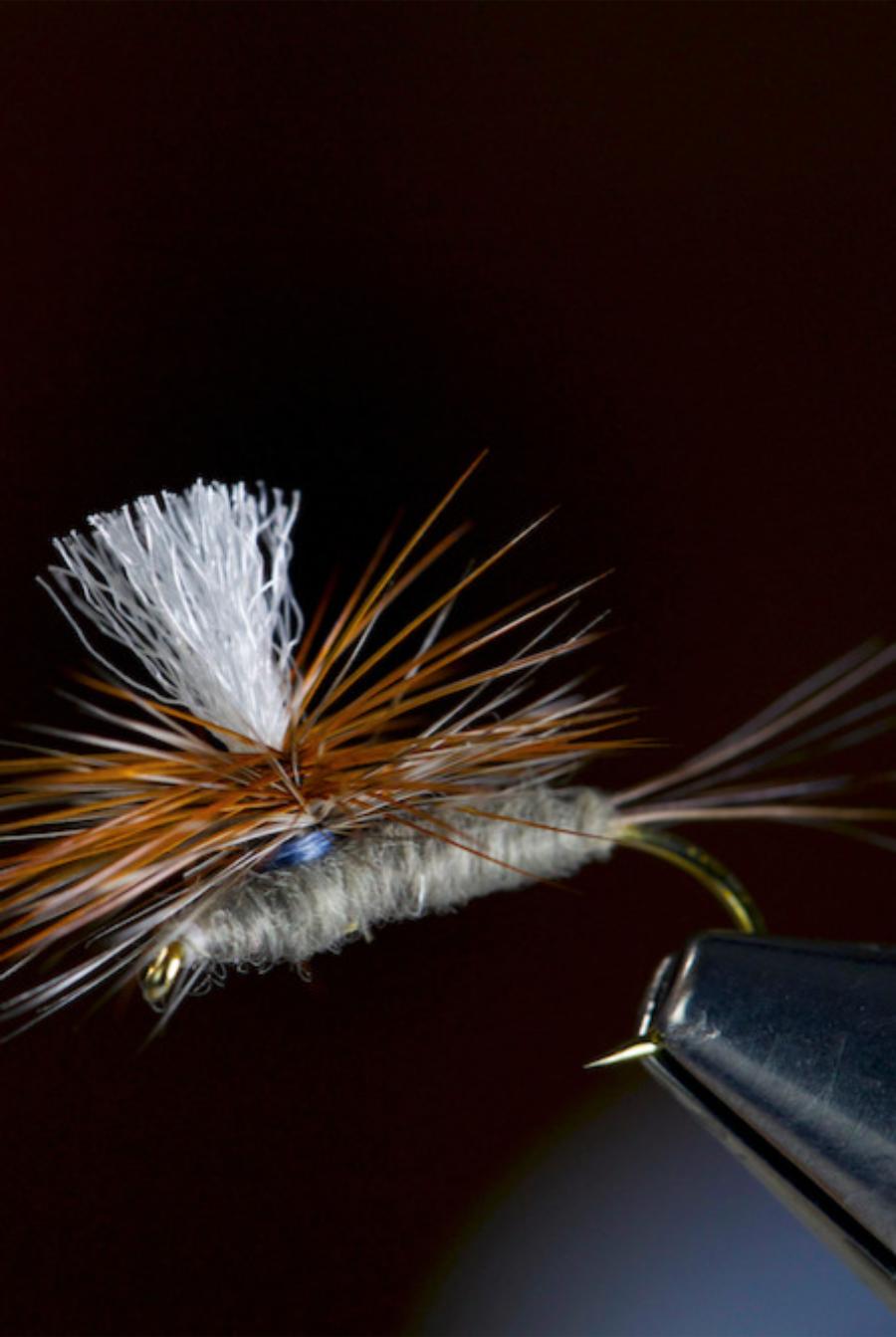
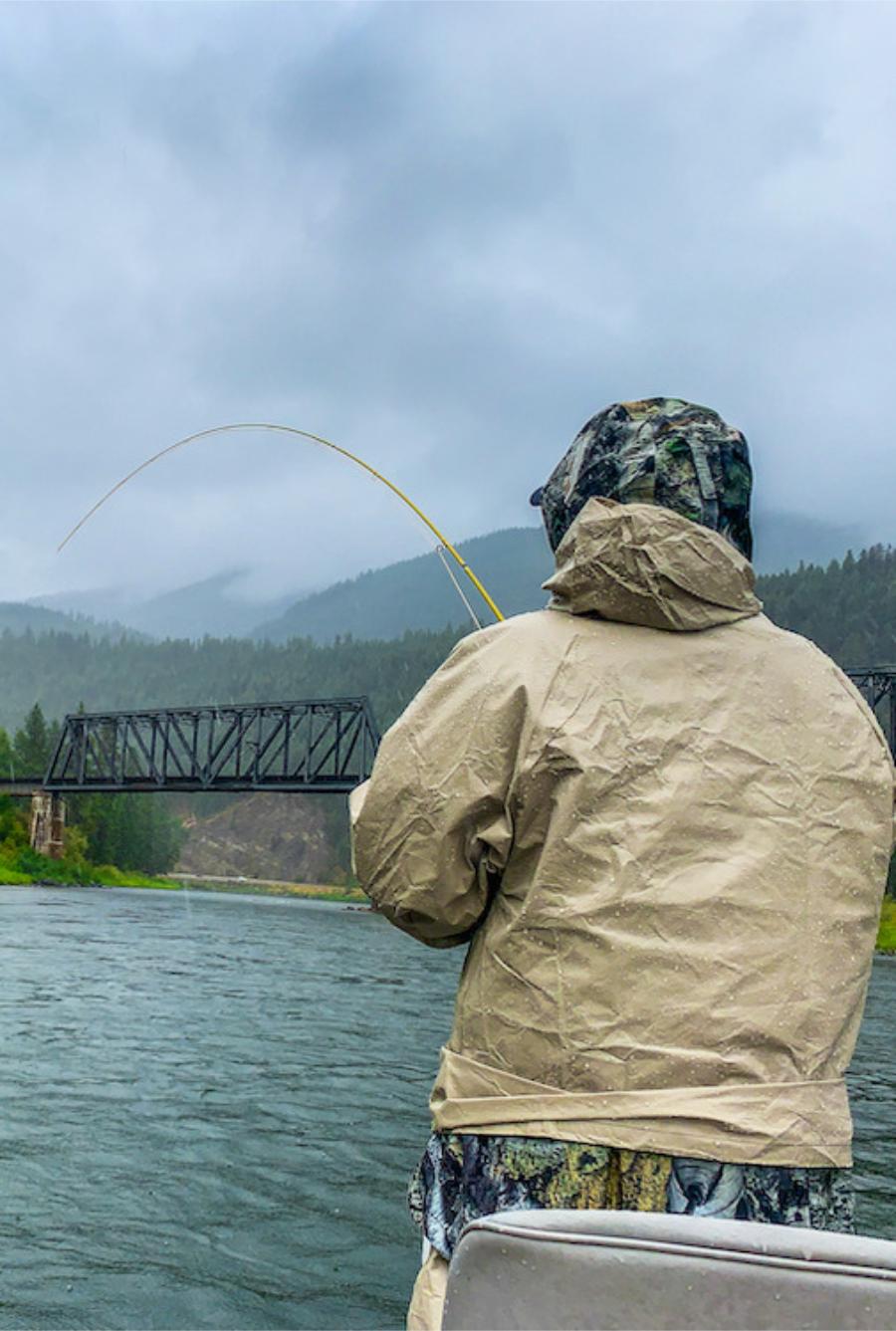
Guided Tours vs Solo Adventures
When it comes to fly fishing in St. Regis, you’ve got options. You can go the guided tour route or strike out on your own. Both have their perks.
With a guided trip, you’ve got an expert by your side. They know the hot spots, the right flies, and the best techniques. It’s like having a cheat code for catching fish. Plus, they’ll handle all the logistics – gear, transportation, even lunch. All you have to do is show up and cast.
But maybe you’re the independent type. You want to explore, experiment, and learn on your own. Solo adventures let you do just that. You can take your time, go at your own pace, and savor the solitude. It’s just you, the river, and the fish.
Of course, going solo means you’re on your own if something goes wrong. And you might spend more time untangling your line than actually fishing. But hey, that’s part of the fun, right?
So, when you boil it all down, your level of expertise and what you’re hoping to get from the whole shebang really play a huge role. New anglers might appreciate the guidance and insider knowledge of a tour. Guides always start the trip by giving a casting lesson, talking about mending, hook sets, and fighting fish. Guides spend time at the beginning of the trip to make sure their clients have and understand the tools needed to be successful for the day. Seasoned anglers enjoy a hard working guide who knows the river like the back of their hands, the correct flies to use, and where those bigger fish live. Maybe even a tip or two that helps correct that nagging tailing loop. Either way, St. Regis has something for everyone.
The Importance of Respecting Nature
Here’s the thing about fly fishing: it’s not just about catching fish. It’s about connecting with nature, appreciating its beauty, and preserving it for future generations. And that starts with respect.
When you’re out on the river, you’re a guest in nature’s home. So be a good guest. Follow the rules and regulations. Use barbless hooks and practice catch-and-release. Pack out your trash and leave no trace.
But it goes beyond that. Take a moment to soak in your surroundings. Listen to the rush of the water, the chirping of the birds, the whisper of the wind through the trees. Marvel at the colors – the shimmering scales of a trout, the vibrant wildflowers on the bank, the play of light on the water.
Fly fishing isn’t a competition or a conquest. Working hand in hand with nature, it’s like teaming up for the ultimate project. A dance between angler and fish, river and rod. And like any good partner, we have to give as much as we take.
So as you cast your line in St. Regis, remember that you’re not just fishing. You’re stepping into a much larger story here. You’re smack in the middle of an amazing network, part of a tradition that’s as old as time itself, sharing this incredible bond with nature. Respect it, cherish it, protect it – and it will give you more than just fish. It will give you memories, stories, and a deeper appreciation for the incredible world we live in
